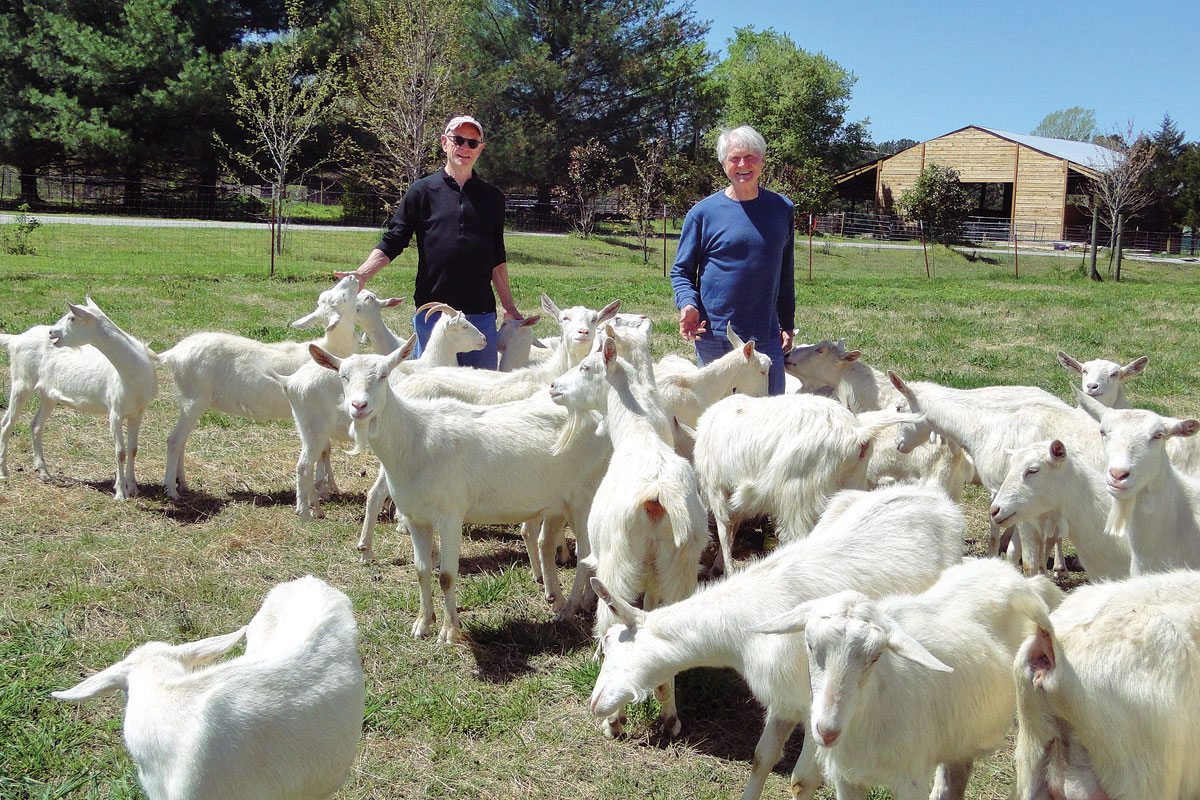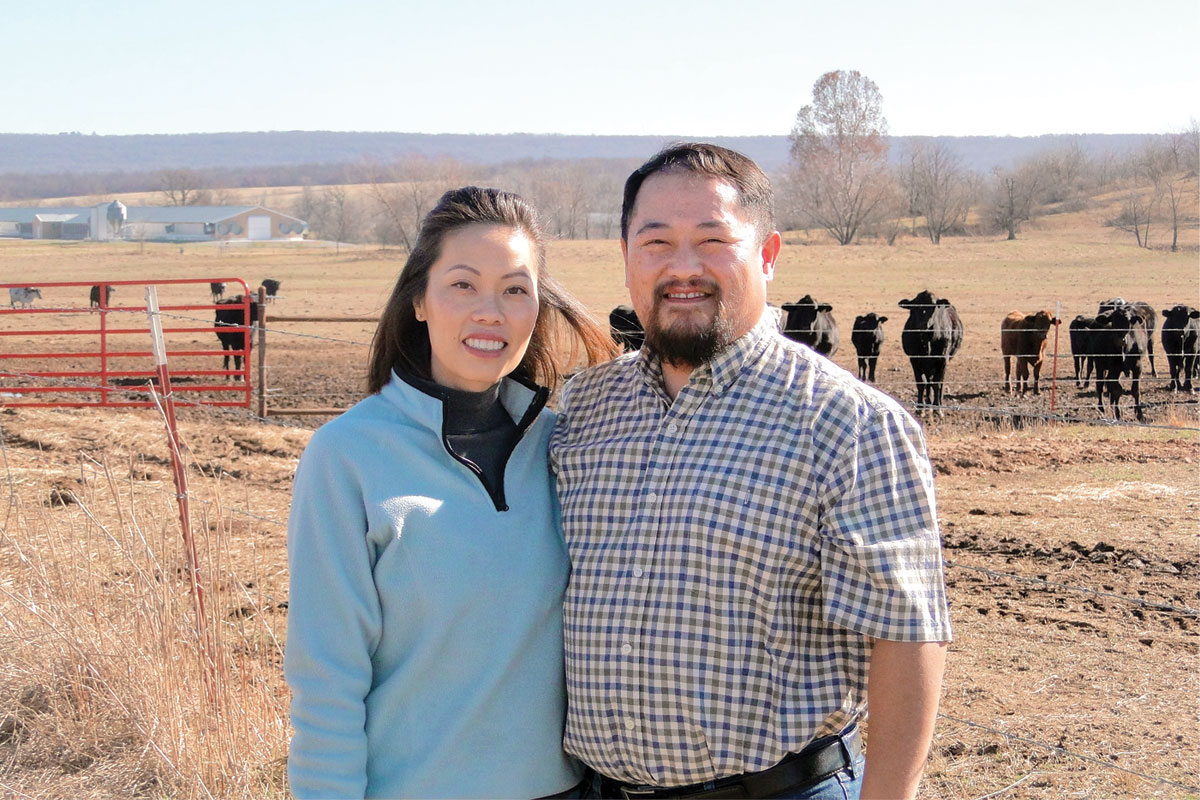
Retired U of A educators work to improve their in dairy goats and beef cattle
Eric Wailes and Michael Holloman live in a Faye Jones-style house just over the city line of Fayetteville, Ark., on the road to Elkins.
The house sits on 18 acres that is home to Broken Cedar Farm, a dairy goat operation. They also have another 430 acres recently dedicated to raising Gelbevieh and Balancer breeding stock under the name of Bearwood Ranch. Both are retired professors from the University of Arkansas where Eric worked in food and ag policy, focusing mainly on the global rice economy, while Michael, a medical doctor, retired from the medical department.
“Trade is a facilitator for cooperation and economic development across the globe with agriculture being a key player,” explained Eric, who spent two years in the Peace Corps and originally planned to be a Third World economist.
“Goats are easy to raise and help keep us grounded by giving us a sense of place, which is important because we have both traveled extensively and would like to continue to do so now that we are retired,” Mike, who purchased the first three goats, explained.
To help make those plans possible, Eric and Mike searched for trustworthy, reliable help and finally found that help in Emma Drummond and Mike Wilson, both of whom want to go into farming themselves and are therefore interested in more than just a paycheck.
Emma and Mike are interested in the health and welfare of each individual animal and really focus on each, in addition to being willing to do whatever is required for facility maintenance, such as repairing fencing and brush hogging.
“I only have to say something once and I can be assured the directions will be followed exactly and promptly,” said Eric.
The high-quality Broken Cedar goatherd is dominantly Saanen with 35 milking does and seven bucks. The mother of one of the does was rated the second-highest in milk volume and protein production in the world.
Saanens originated in Switzerland. They are the largest dairy breed and pure white in color. Best known for milk production, they are also characteristically hardy with a sweet nature that Eric enhances by removing kids from their mothers after the colostrum stage. He then bottle-feeds the babies so they bond with him and are accustomed to being handled.
The herd also contains Nubian bloodlines for increased heat tolerance and Alpine bloodlines for additional hardiness and milk production support. Mike and Eric believe they have a good cross but plan to use selection pressure for confirmation and feed efficiency to improve the livestock sales, typically bucks and wethers most often used for meat during holidays.
They believe when they have downsized to 22 milking does through culling by selection, the does will continue to produce excellent milk while meeting the needs of those seeking the goats for meat which are most often sold by private treaty but occasionally in Diamond, Mo. In addition to improving herd confirmation and feed efficiency, Eric also would like to improve fencing and to learn how to AI goats.
While Eric and Mike sell live animals and milk, Mike particularly enjoys making cheese for their personal use. He attended a three-day boot camp where he learned to make 15 different types of cheese. He finds the process creative and likes to develop his own take on the recipes to develop recipes matching cheeses he and Eric have tasted in Europe. Primary milk customers tend to be mothers of infants who tolerate goat milk better because it’s easily digestible though the elderly and people seeking milk for orphaned animals are also customers.
Breeding is controlled using a six-week window so spring kids are born mid-April when the ground is not as wet. Does are milked once a day with supplementation and health protocols used only as needed because high standards of cleanliness and sanitation limit the number of necessary interventions. However, feet are trimmed once per year and free choice trace mineral salt blocks are available all the time.
Goats receive 16 to 18 percent protein sheep and goat grain pellets, with milking does fed once a day, young stock twice a day and bucks limited to 1 pound per day to maintain good health and activity levels. All goats browse pastures with kids going to honeysuckle “like iron to a magnet.” They also receive hay custom baled on 140 acres off-site, which usually meets all of their needs.
A year ago, Mike and Eric sold their commercial cattle herd and now have 35 registered Gelbvieh and Balancer females, including this year’s calves which will be used to increase herd size. These breeds were chosen because calves are smaller, the meat contains good marbling and the breeds are docile. Two recently purchased bulls were selected because of balanced EPDs. One is Gelbvieh and the other a Balancer whose purpose is to develop larger-framed cows.
Future plans include using AI with the herd in order to take advantage of superior and proven bulls, flushing some of their cows and promoting their operation through showing.
“My dad William taught me the most important thing about raising animals is having enough patience to gain cooperation because trying to impose your will on them is stressful for everybody,” Eric explained.






